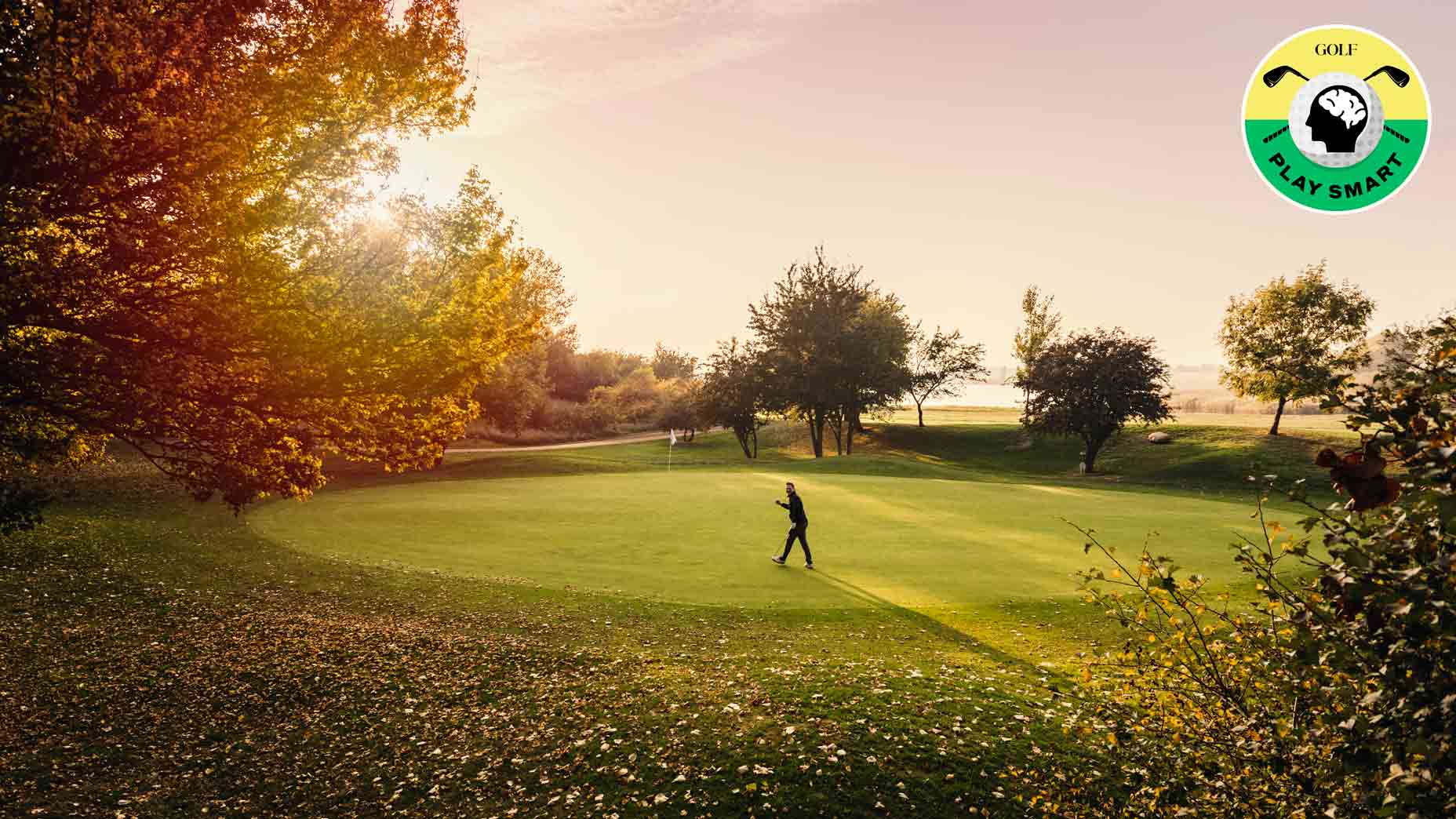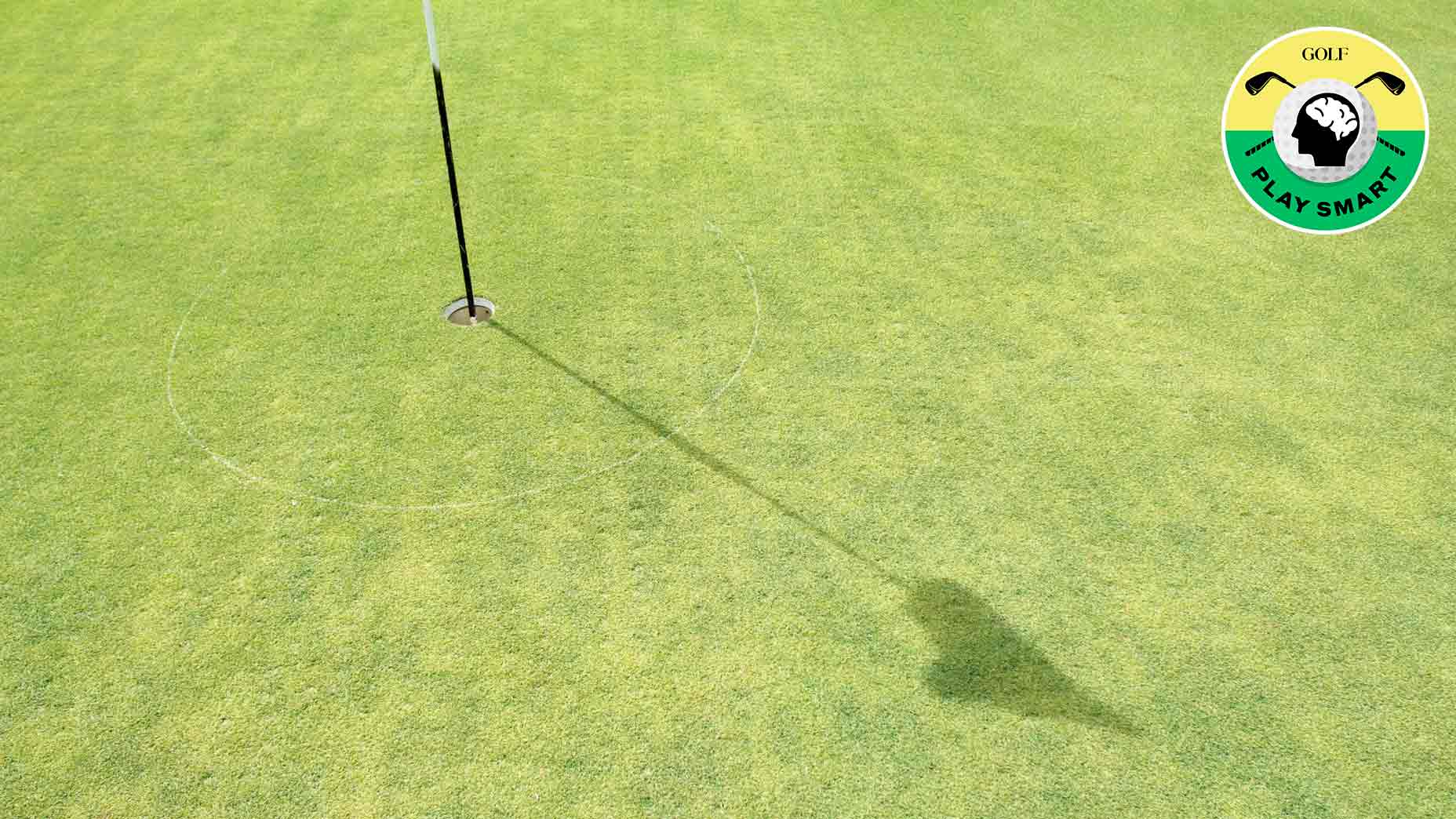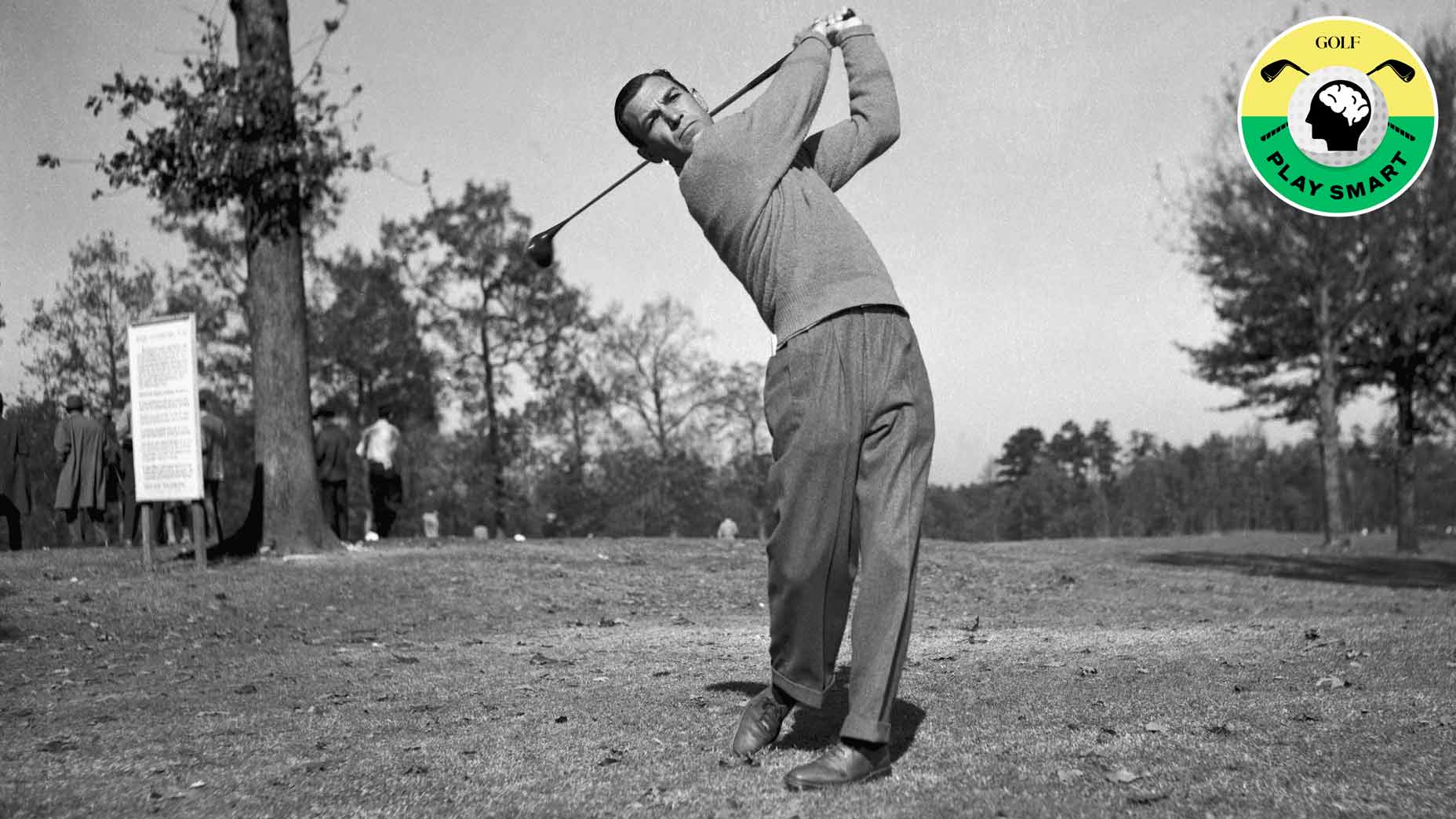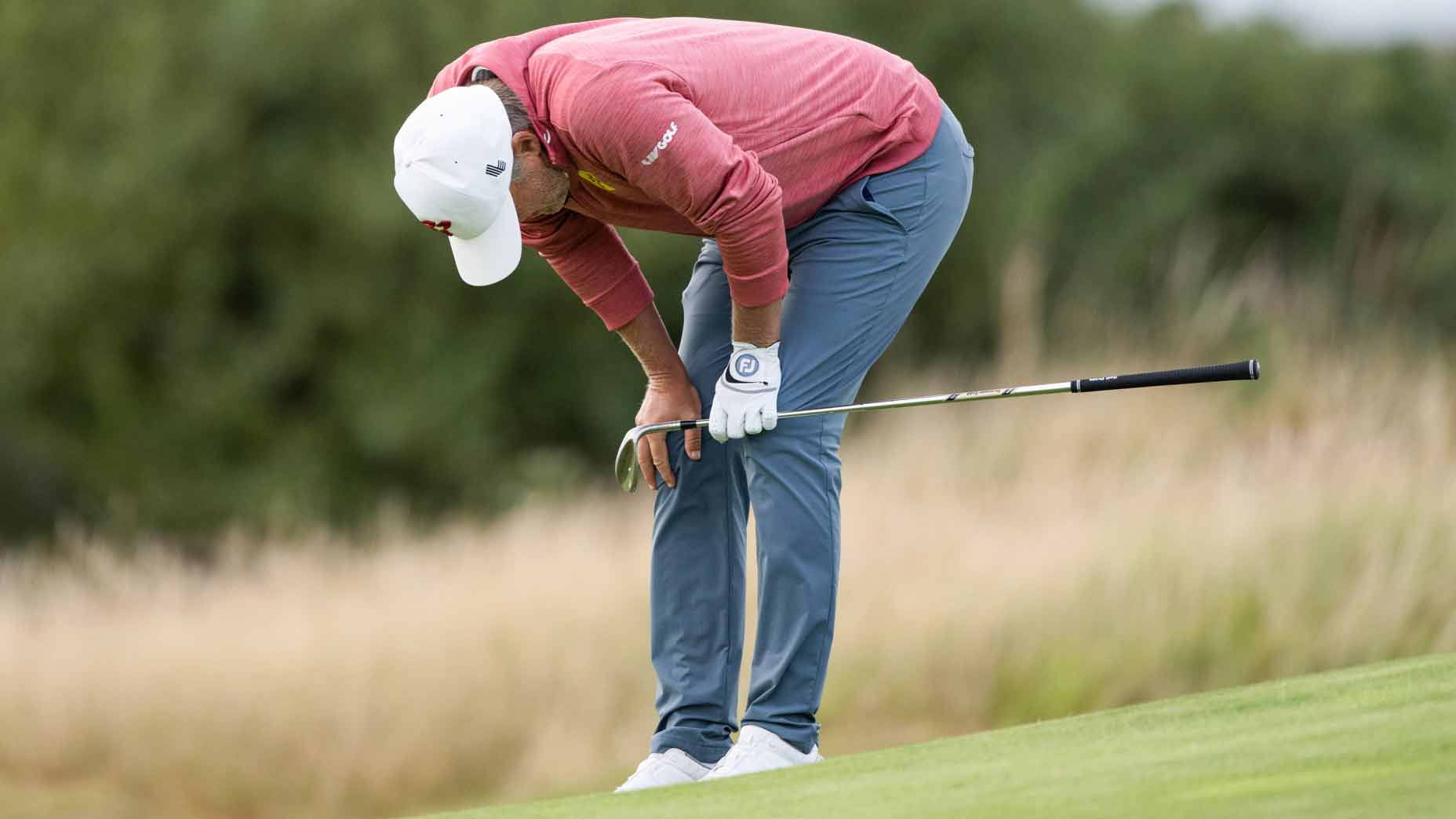The ‘leaf rule’ and 5 other fall-golf guidelines every golfer should know
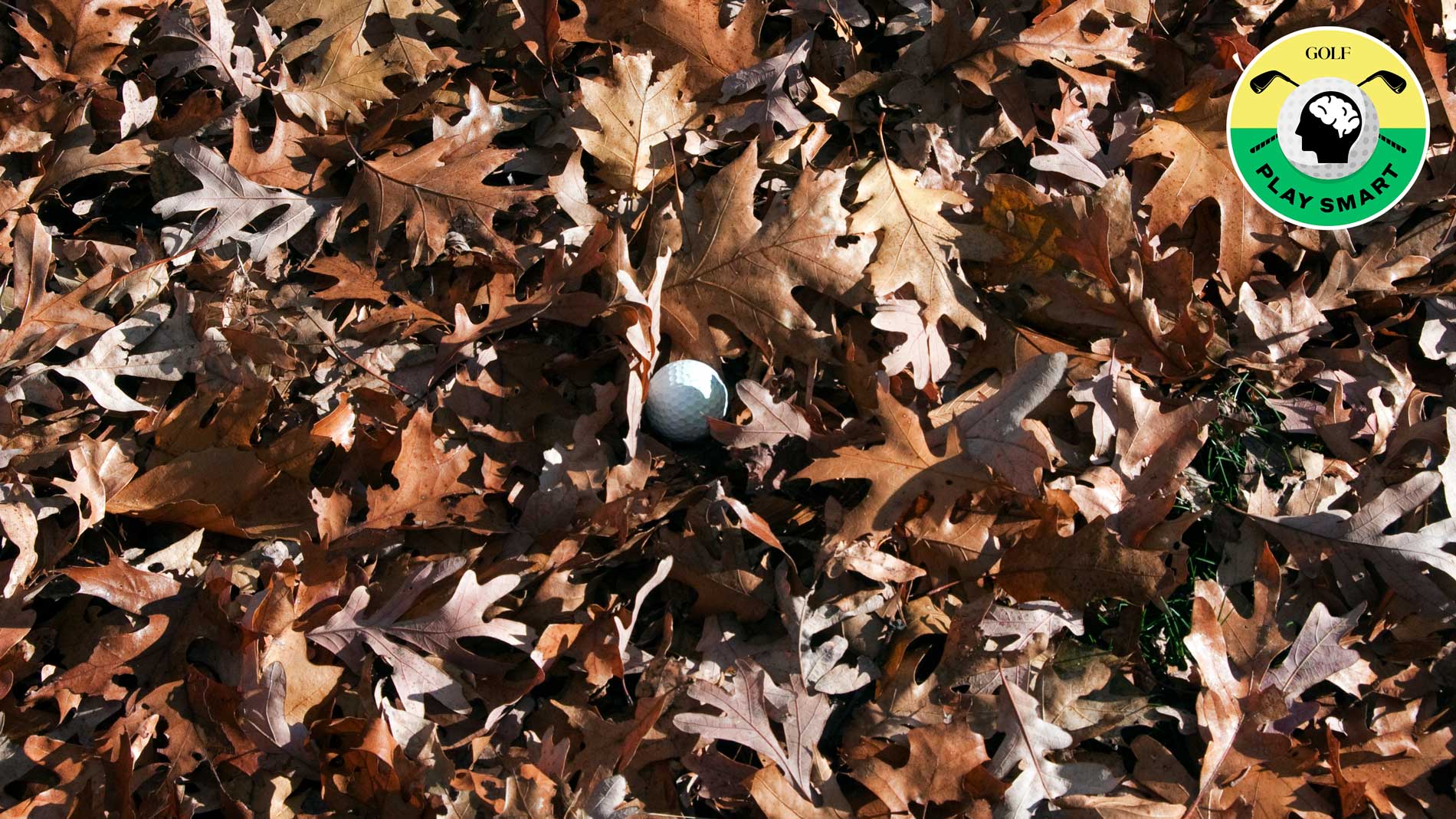
Are you ready for fall golf?
Getty Images
Welcome to Play Smart, a regular GOLF.com game-improvement column that will help you play smarter, better golf.
As I sit here typing, rain is pouring, wind is whipping, and I’m slowly seeing leaves drop to the ground — yep, it must be fall in Seattle.
For many parts of the country, this time of year brings lots of fun memories. But one of my favorite is the experience of fall golf, where you can see your breath upon arriving at the course, and the grassy dew releases a fresh scent into the air.
Fall golf is also fun because it really challenges your skills and tests your patience, making sure you adapt your game to fit the conditions — or else your scorecard can go high in a hurry.
But to help you shoot as low as possible, it’s important to understand what rules to follow and what attire to wear, ensuring you’re both comfortable out on the course, and familiar with situations that no other season brings.
Here are 6 must-know tips before making your next tee time this fall.
1. What happens if your ball lands in a pile of leaves? Is there relief?
One obstruction that can really get in the way of shooting low during the autumn? Leaves.
Like other tricky obstacles such as brush, sand or dirt piles, every player knows they want to avoid these types of impediments — but during fall golf, it can be extremely tricky to know where piles of leaves actually are on the course.
That’s why something known as the leaf rule is important to understand.
So what does it actually constitute? Per the USGA:
“Since 2019, golfers are allowed to move those loose impediments anywhere on the golf course, including in a bunker or penalty area. If your ball moves while removing the loose impediment, it’s a one-stroke penalty and you must put the ball back… except if you’re on the putting green. In that case, just put the ball back where it was and play on without penalty. So feel free to move those leaves out of your way before making your next stroke, but do so carefully. And keep in mind that you can remove leaves, and other loose impediments, by any means. That could mean your hands, a towel, your hat – whatever you’ve got in your bag. Just don’t move the ball!”
While that’s helpful to know, always check with your course or tournament officials to make sure they allow the leaf rule.
2. How does aeration impact scores during a round of fall golf?
Similar to in spring golf, courses often aerate the greens in order to prep the turf for the fall and winter seasons. While the punctures and sand on the green can cause headaches, unfortunately, there’s no formal relief offered to players.
But some courses do allow relief to players when aerating greens, so it’s always important to ask before teeing off what the rules state.
Per the USGA: “Aeration holes are not considered ground under repair, so relief isn’t allowed. Like the so-called ‘leaf rule’, relief may be permitted if a Model Local Rule (E-4) is in effect.”
3. What qualifies as loose impediments?
So you’re playing on a course that has lots of branches, trees, leaves and other questionable items scattered around — but what are you and aren’t you allowed to move before hitting your shot?
That’s where the question about loose impediments comes into play.
What qualifies as such? According to the USGA, loose impediments are “unattached natural objects like stones, loose grass, leaves, branches, pine needles, or clumps of compacted soil (including aeration plugs).” Other types of loose impediments are “dead animals, worms, insects, or other similar animals that can be removed easily, and the mounds or webs they build (such as worm casts and ant hills), are also loose impediments.”
But be careful with just moving anything, because the USGA clearly states that “natural objects are not loose if they’re attached or growing, solidly embedded in the ground (that is, can’t be picked out easily), or sticking to the ball.”
While the rules state that you can remove certain loose impediments, always remember to do so without moving the ball. Should that happen, you’ll pick up a frustrating one-stroke penalty.
4. Is there relief for any course maintenance issues like tree removal?
Fall is the ideal time for crews to do a little maintenance on the course, which can mean removing trees or installing new irrigation systems. Should your ball find one of these projects, the rules allows free relief, since these are considered to be “ground under repair.”
5. How do I update my handicap during fall golf?
Since the fall means shorter days and less sunlight (in addition to unpredictable weather), it can be tricky to find the time to squeeze in a full 18 holes. Heck, even just playing a quick 9 can be difficult.
But your grind shouldn’t go to waste, so the USGA makes sure players can still update their handicaps.
So long as the golfer completes at least 7 holes, “the player can still post a 9-hole score,” the USGA says. If you’re able to get through 14 holes, an 18-hole score can be posted.
To properly update your handicap, the score for any unplayed holes is par plus any handicap strokes you receive based on your official golf handicap.
6. What’s the best attire or other recommendations to stay both warm and dry?
When it comes to playing golf in the fall, choosing the right attire can be tricky. You definitely want to make sure you wear something warm, but it’s also a wise move to pack something that can keep you dry (just in case Mother Nature decides she wants to drop some rain on you).
According to GOLF Top 100 Teacher Sarah Stone, she says it’s important to layer up without feeling too bulky — and to never overlook the importance of keeping your feet dry.
“Layer up your clothes, but try to use thinner performance pieces that won’t be too bulky when you swing,” Stone suggests. “Perhaps choosing a vest to layer on top will make it easier to move as well.
“I also like to throw a pair of dry socks in a ziplock bag, just in case it rains. Wet feet are the worst.”
If you’re looking for some golf attire that’s both stylish and functional, don’t forget about the abundance of apparel options over on Fairway Jockey!
Nicklaus ’86 Crewneck
$65
View Product

